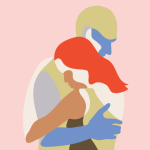Understanding CAR T-Cell Therapy Side Effects
- Powerful Immune Response: CAR T-cell therapy works by reprogramming a patient’s own immune cells to recognize and attack cancer. As these engineered cells multiply and release cytokines, the body’s immune system becomes highly activated—sometimes triggering inflammation or neurological effects.
- Key Side Effects: The two main reactions doctors watch for are Cytokine Release Syndrome (CRS) and Neurotoxicity (ICANS), which can cause fever, confusion, or, rarely, seizures—but are usually well controlled with close monitoring and timely treatment.
- Expert Care Close to Home: At UCI Health, Dr. Elizabeth Brem is leading efforts to safely deliver this breakthrough therapy, helping Orange County patients benefit from its life-saving potential while managing its powerful effects.
“The CAR T-Cell Therapy side effects we worry about the most fall into two buckets,” says Dr. Elizabeth Brem, a triple-board certified UC Irvine Comprehensive Cancer Center hematologist-oncologist. In Orange County, Dr. Brem is among many experts bringing cutting-edge CAR T-cell therapy to patients with hard-to-treat blood cancers—advancing care while ensuring safety through vigilant monitoring for side effects like Cytokine Release Syndrome and ICANS.
Read MoreCytokine Release Syndrome (CRS)
CRS is the most common side effect of CAR-T therapy. It’s an inflammatory response that can range from mild flu-like symptoms to life-threatening complications. CRS usually starts within a few days of infusion and lasts about a week, though timing can vary.Common Signs & Symptoms:
- Fever and chills (often the first sign)
- Low blood pressure or dizziness
- Difficulty breathing or low oxygen levels
- Fatigue and body aches
- Fluid retention or swelling
WATCH: CAR T-Cell Therapy Side Effects
Why It Matters: While mild cases are common and treatable, severe CRS can be dangerous. Patients may need hospital or ICU care to stabilize blood pressure, support breathing, and control inflammation (6,7).
How It’s Managed: Doctors monitor patients closely after infusion. Treatments may include the drug tocilizumab (to calm the immune response), steroids for severe inflammation, fluids and oxygen, and sometimes ICU care. Staying near the treatment center during the first couple of weeks is key (5,8).
Neurotoxicity (ICANS)
Some patients develop neurological symptoms known as ICANS — short for Immune Effector Cell-Associated Neurotoxicity Syndrome. This usually occurs within the first two weeks after treatment. Symptoms can be mild or, in rare cases, severe (9,10). According to Dr. Brem, a triple-board certified UCI Health hematologist-oncologist, “for most people it’s just sort of this little bit of confusion, maybe forgetting where they are, maybe having a hard time finding a word.” She adds that, “it can be as bad as, for example, people having seizures. It’s really uncommon that we get there, particularly because we’re looking so closely for it.”
Common Signs & Symptoms:
- Confusion or disorientation
- Difficulty finding words or writing
- Tremors or shakiness
- Headaches or drowsiness
- Seizures (in rare severe cases)
Why It Matters: Neurotoxicity can affect thinking and coordination. Most people recover fully, but in serious cases it can be life-threatening. That’s why doctors perform frequent neurological checks after infusion.
How It’s Managed: Treatment depends on severity — often with steroids and seizure medications. Patients are closely observed for early signs so doctors can act quickly.
What Patients and Families Should Know
• Most people who receive CAR-T experience some level of CRS or neurotoxicity — but the majority of cases are mild to moderate and resolve with proper care (1,2).
• CAR-T therapy is only given in specialized centers with 24-hour monitoring and staff trained to manage these side effects (5,6).
• Report any fever, chills, confusion, or new symptoms right away — early treatment is key (7,9).
RELATED: CAR T-Cell Therapy: Why Finding the Right Cancer Center Matters
While CAR-T side effects can sound intimidating, they’re well understood and usually manageable. These side effects should be balanced with the benefits of CAR-T treatment, often in patients with recurring/difficult to treat cancers. With careful monitoring and timely treatment, many patients go on to recover and benefit from this powerful therapy (1–13).
Expert Resources On CAR T-Cell Therapies
- CAR T-Cell Therapy Explained: What Diffuse Large B-Cell Lymphoma Patients Should Know
- CAR T-Cell Therapy Side Effects Can Be Serious, But Many Are Short-Lived
- CAR T-Cell Therapy for Diffuse Large B Cell Lymphoma: Do I Qualify?
- CAR T-Cell Therapy for Non-Hodgkin Lymphoma
- CAR T-Cell Therapy, Bispecific Antibodies — Choosing Between Innovative Treatment Options
- CAR T-Cell Therapy: A Step-By-Step Guide to Having This Breakthrough Treatment
- Can You Afford the High Cost of CAR T-Cell Therapy?
- CAR T-Cell Therapy’s Current and Future Success
WATCH: The Value of CAR T-Cell Therapy for Patients.
Questions to Ask Your Doctor
- Am I a candidate for CAR T-cell therapy?
- What are the potential risks and side effects?
- What are the chances of success for my specific cancer type?
- What does the treatment process involve?
- Where will I receive treatment, and how often?
- Are there alternative treatments I should consider?
- What is the cost, and will my insurance cover it?
- What experience does this center have with CAR T-cell therapy?
- What kind of follow-up care will I need?
- Can I speak with other patients who’ve undergone this therapy?
Learn more about SurvivorNet's rigorous medical review process.






